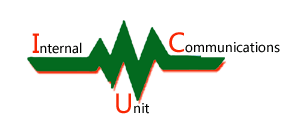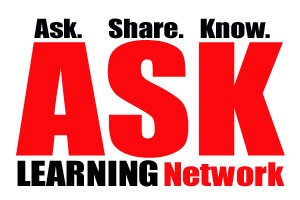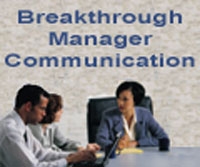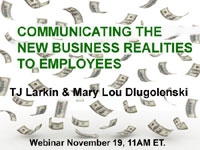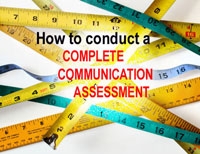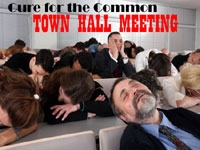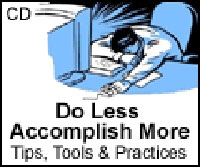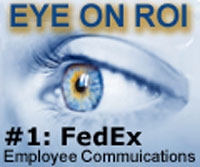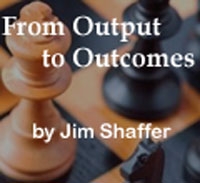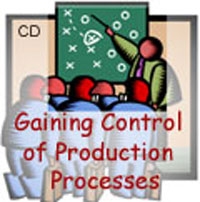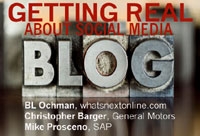- Do your communication efforts tend to be “one-offs” that consume a lot of time and effort but don’t always generate the results you had hoped for?
- Do senior leaders’ eyes glaze over when you explain your latest “big idea”?
- Do you wish you had more time to spend learning about new things and less putting out fires?
While strategic planning is probably at the top of the list of things that most communicatorsdon’t want to do, the reality is that when done well, strategic planning can not only help to save time, and money, but can increase the odds of achieving desired communication outcomes. And, the good news is, effective planning doesn’t have to take weeks or months or result in dozens of meetings. In fact, the process can actually be quite simple and straightforward.
This webinar will offer easy-to-follow steps and provide practical tips and advice that can be used for any planning effort—from developing an internal communications plan to developing a marketing campaign—or even focusing on a single initiative.
What You Will Learn:
- How to position the plan for success by starting with the end in mind
- Why your mission statement is your friend
- How and why to align your efforts with your organization’s strategic plan
- A step-by-step process for developing a strategic plan
- Developing a process for plan updates – how to keep the plan alive
- How to build measurement into the plan
- How to make sure things get done!
Who Should Attend
- Communicators, PR and marketing professionals at all levels.
Presented by:
 Linda Pophal is CEO of Strategic Communications, and a marketing and communication strategist with 20+ years experience in healthcare, education and not-for-profit marketing and communications. She has managed all aspects of corporate and marketing communication including employee communication, public relations, advertising, social media, market research, brand management and strategic planning. Pophal has developed and implemented strategic business, marketing and communication plans for healthcare and educational organizations and consultants, generating measurable results based on client goals. She has developed and delivered training programs for national and local audiences on all aspects of communication management and employee relations. She is author of The Essentials of Corporate Communications and PR and Complete Idiot’s Guide to Strategic Planning.
Linda Pophal is CEO of Strategic Communications, and a marketing and communication strategist with 20+ years experience in healthcare, education and not-for-profit marketing and communications. She has managed all aspects of corporate and marketing communication including employee communication, public relations, advertising, social media, market research, brand management and strategic planning. Pophal has developed and implemented strategic business, marketing and communication plans for healthcare and educational organizations and consultants, generating measurable results based on client goals. She has developed and delivered training programs for national and local audiences on all aspects of communication management and employee relations. She is author of The Essentials of Corporate Communications and PR and Complete Idiot’s Guide to Strategic Planning.
 Plug into an online learning network featuring 100+ hours of expert training and real-world help for busy communication, HR, marketing & PR professionals.
Plug into an online learning network featuring 100+ hours of expert training and real-world help for busy communication, HR, marketing & PR professionals.
OK, let’s do the math. If you are able to just get one key strategic question you’re struggling with figured out with the help of the brightest minds in the field, and it saved your organization X$’s the first year, and leads to you getting a pay raise or even a promotion … what is your membership worth? Or asked another way, what’s your career success worth? (Answer: way more than the $1095 annual membership). Give ASK a try and see for yourself.
Learning modules and resources on these areas:
- Communication Leadership
- Communication Skills
- Crisis Communications / Planning
- Employee Communications / Engagement
- Intranets and Internal Social Media
- Marketing, Reputation and Corporate Social Responsibility
- Measurement / ROI
- PR and Media Relations
- Social Media / Technology
Get one year access to the entire private ASK Peer Learning Network
![]() Learn at your leisure from 90+ webinar replays
Learn at your leisure from 90+ webinar replays
![]() Network and ask questions with professional peers
Network and ask questions with professional peers
![]() Attend all upcoming webinars free during your membership
Attend all upcoming webinars free during your membership
![]() 20% discount on any Communitelligence conference
20% discount on any Communitelligence conference
![]() Free subscription to weekly Comm-Digest newsletter
Free subscription to weekly Comm-Digest newsletter
ASK is designed for:
Professionals working in all disciplines including employee engagement, communication leadership, social media, public relations, marketing-branding, intranets, HR, corporate social responsibility and an expanding list of related disciplines.
Limited time offer: $1095/annual membership
Testimonials
“With mountains of information at our fingertips, we need Sherpas to help us dig a path. With ASK, we can rely on our trusted peers, supplemented with a pool of other experts, to stay on top and even ahead. What’s also great about ASK is the sharing and collaboration. One time you’re a giver of advice and the next time you’re a beneficiary.” Liz Guthridge, publisher of The Lean Communicator
“This kind of a network is long needed–in that it offers access to a proven range of opinions instead of just a common base of experience. In so doing, it stands out from a lot of the breathless blather and baby talk that one finds all too often in discussions of these crucial issues.” Mike Klein, The Intersection, Belgium
For questions, just use this form, email customerservice@communitelligence.com or call 904-588-2366. Each membership is for an individual and cannot be shared with any others. Memberships remain active if member changes jobs.
(Group memberships also available Contact us).
Webinar led by Katie Paine, author of Measure What Matters
The explosion in mobile commerce and communications and the arrival of contextual computing devices such as Google Glass will change forever how we communicate — and measure our communications.
Imagine a world without “how useful do you find the newsletter?” surveys and relying on employees reluctantly filling out questionnaires about what they recall or feel. That world will be populated with communications teams who will be able to measure what is most effective in real time, and tailor delivery and content accordingly.
As these technologies are adopted in organizations, organizational silos between traditional and social media, between internal and external communications between marketing, advertising and PR will all be increasingly blurred.
The growth of sponsored content, native advertising and uses of data will simultaneously make stakeholder relationships more important and measurement more challenging. This session will present attendees with an overview of specific instructions on how to define success and measure it in this new era.
What You Will Learn:
- How this will redefining every metric you’ve ever used
- How this will affect measurement research
- How to get ready for the contextual measurement revolution
- The six steps to perfect measurement in the age of context
- How new standards for measurement will drive metrics in the future
- How to use the new contextual metrics to get the ear of the board
Who Should Attend
Communicators, PR and marketing professionals at all levels.
Presented by:
 Katie Delahaye Paine has been a pioneer in the field of measurement for more than two decades. In the process she and her firms have analyzed millions of articles, conducted thousands of surveys, and read or watched countless tweets, YouTube videos and Facebook pages in order to measure the effectiveness of her client’s communications.
Katie Delahaye Paine has been a pioneer in the field of measurement for more than two decades. In the process she and her firms have analyzed millions of articles, conducted thousands of surveys, and read or watched countless tweets, YouTube videos and Facebook pages in order to measure the effectiveness of her client’s communications.
She has advised some of the world’s most admired companies and has been a leading promoter of standards in the PR and Social Media Measurement field, most recently as the initial organizer of the Conclave that released social media measurement standards in June.
She has founded two measurement companies, KDPaine & Partners Inc., and The Delahaye Group. Her books, Measure What Matters (Wiley, March 2011) and Measuring Public Relationships (KDPaine & Partners 2007) are considered must reading for anyone tasked with measuring public relations and social media. Her latest book, written with Beth Kanter, “Measuring the Networked Nonprofit, Using Data to Change the World,” is the 2013 winner of the Terry McAdam Book Award.
Are you tired of struggling to get—and keep—people’s attention and convince them to take action?
You can improve your ability to connect with and influence others by learning how our brain works and applying some simple techniques based in neuroscience.
Forget about right brain/left brain, an archaic concept. Instead, the “social brain” drives our thinking and our actions.
This session will briefly cover basic neuroscience principles geared toward non-scientists. We’ll then focus on how you can apply those principles to help yourself and others think better and perform at higher levels. By taking these actions, you can improve your influencing skills and actions.
Learn how to:
- Increase your self-awareness to improve your ability to influence
- Design the best environment for influencing
- Speak and write with intent to make better connections with others
- Make your messages more compelling and memorable
- Listen more effectively
- Slow down and quiet the brain to tap into the unconscious and speed up gaining insights and influencing
- Ask powerful thinking questions that increase focus and gain greater clarity
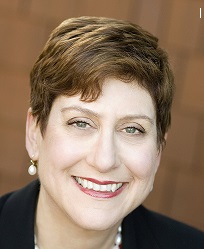 Your webinar leader, Liz Guthridge is an award-winning consultant, leadership coach and trainer who’s studied with Dr. David Rock of The NeuroLeadership Institute, Dr. BJ Fogg, founder of the Stanford Persuasive Technology Lab and other luminaries in the fields of employee communication and organizational change. Liz has extensive experience supporting leaders improve their communication, develop new habits and adapt their organizations.
Your webinar leader, Liz Guthridge is an award-winning consultant, leadership coach and trainer who’s studied with Dr. David Rock of The NeuroLeadership Institute, Dr. BJ Fogg, founder of the Stanford Persuasive Technology Lab and other luminaries in the fields of employee communication and organizational change. Liz has extensive experience supporting leaders improve their communication, develop new habits and adapt their organizations.
Liz Guthridge is an award-winning leadership coach, consultant and trainer with extensive change, employee communication and organization development experience.
As the founder of the boutique firm Connect Consulting, Liz works with leaders at all levels to help them move from blue-sky thinking to greener pastures actions. With her support, Liz’s clients enhance the clarity of their ideas, plans and actions. Her clients also improve the quality of their conversations, their ability to influence and their skill in building habits.
Liz contributed the chapter “Change Through Smart-Mob Organizing: Using Peer-by-Peer Practices to Transform Organizations” to the book The Change Champion’s Field Guide (Wiley 2013).
Besides being a certified coach in brain-based coaching, she is serving as a teaching assistant for the Executive Masters in NeuroLeadership program through the NeuroLeadership Institute co-founded by Dr. David Rock. Liz also is a graduate of Dr. BJ Fogg’s Persuasion Boot Camp and is one of his Tiny Habits™ coaches.
Tell me and I may hear. Tell me and let me add my 2-cents and now it’s our decision; I’m all in. Yes, one of the most powerful and proven catalysts to engagement is simply involving employees in generating ideas that address an organization’s most pressing challenges. By opening up these important conversations to employees, individuals feel like they’re part of the business, and not watching from the sidelines.
Attend this webinar to see how a diverse range of companies are using co-creation — also called crowd-sourcing and open innovation — to achieve significant improvements in both employee engagement and business outcomes.
Borrowing from his experience working with leading companies, Preston Lewis, co-founder and director of San Francisco’s Bonfire, will explain how to use communication co-creation and audience-centricity to effectively drive creativity, innovation and employee engagement within your company.
You will learn how to:
- Position communication as a catalyst for co-creation
- Build a holistic engagement strategy, supported by multidisciplinary communications
- Use emerging crowd-sourcing technologies to drive employee engagement efforts
- Increase participation (both employee and customer) in key brand initiatives
About the Speaker:
 Preston Lewis is an expert in branding, employee engagement and internal communications. A sought-after speaker, Preston is an energetic and creative leader who helps companies understand how to solve complex problems through communication and design.
Preston Lewis is an expert in branding, employee engagement and internal communications. A sought-after speaker, Preston is an energetic and creative leader who helps companies understand how to solve complex problems through communication and design.
Preston and his team have designed and implemented communication campaigns for some the world’s largest and most successful companies, including Starbucks, Genentech, Nortel Networks, NASDAQ, and HP.
The profession of corporate communications is steeped with tradition. Though there are many new channels, we tend to use them to say the same old things. Employees have a multitude of ways to express themselves after hours, but at work, they tend to have much less voice. This imbalance leaves the unstated impression that all the important communications is done by the professionals.
Heather Rim, vice president of global corporate communications at Avery Dennison, and her team continually look for ways to expand employee voice and make communications fresh and fun. Blending simple ideas with the power of communication networks, her team is shaking up old ideas about what traditional communications looks like, includes and accomplishes. In this special webinar, she will show some of the unique Avery Dennison communication programs that are winning high marks from employees and leadership – and would be worth considering for your organization.
What you will learn:
- Starting with the philosophy – corporate communications should never be boring
- Behind “The Beat,” a global employee sounding board that just keeps growing
- Just launched: an intranet built on Google
- How a CEO video blog is sparking unexpected impact
- Blending formal and informal communications – Letting employees tell their own stories
- Less is more when it comes to social media policy
Presented by:
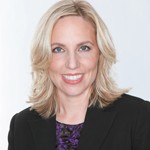 Heather Rim is vice president of Global Corporate Communications for Avery Dennison Corporation. She was named to her current position in January 2011. Heather joined Avery Dennison in 2010 as senior director, Internal Communications.
Heather Rim is vice president of Global Corporate Communications for Avery Dennison Corporation. She was named to her current position in January 2011. Heather joined Avery Dennison in 2010 as senior director, Internal Communications.
Heather is responsible for the strategic direction and management of all aspects of corporate communications for Avery Dennison including employee communications, corporate brand management, crisis communications, social media and digital communications, corporate media relations, and corporate philanthropy.
Before joining Avery Dennison, Heather held the position of vice president, Communications for the Disney ABC Television Group, where she designed and implemented global communications strategies to inform and engage employees across Disney’s entertainment and news television properties. Previously, she progressed through Corporate Communications, Marketing and Investor Relations roles at companies including WellPoint, Countrywide and KPMG.
Heather received a master’s degree in communications management from the University of Southern California and a bachelor’s degree in marketing from Azusa Pacific University. She serves on the boards of the United Way of Greater Los Angeles and the Pasadena Symphony, and is a member of the Arthur Page Society.
 Kristin Wong serves as the lead for all corporate internal communications programs and channels. She drives efforts to ensure the company’s employer brand is activated throughout key employee touch points including the enterprise portal, global employee ambassador team, values and ethics programs, and corporate town halls.
Kristin Wong serves as the lead for all corporate internal communications programs and channels. She drives efforts to ensure the company’s employer brand is activated throughout key employee touch points including the enterprise portal, global employee ambassador team, values and ethics programs, and corporate town halls.
Prior to joining the company, Kristin worked for The Walt Disney Company where she assisted in the development of internal communications programs for Disney’s ABC television business. She received a master’s degree in communication management from the University of Southern California and also holds a bachelor’s degree in media studies from Pomona College of the Claremont Colleges. Outside of work, Kristin is a blogger and pop culture junkie who’s passionate about the technology trends that will shape our digital future.
Walgreen’s social intranet, The Wall, launched in 2013 and is in many ways already beginning to prove itself as a digital workplace where employees become informed, connected and engaged in a whole new way. As expected, the journey has had its challenges, and this webinar is designed to make that journey a little smoother for those on the same path.
Whether your organization is thinking about, has started or already has an internal social intranet, don’t miss this very educational “behind-the-firewall” look at what it takes to launch and build a social intranet that delivers measurable business value.
Learning topics:
- First, be realistic
- Expect and embrace disruption, and help others do the same
- Continually build the case for how your social intranet will drive business results
- Keep your key partners close, and your leaders closer
- Develop a clear, compelling, evolving communication strategy
And five more!
Presented by:
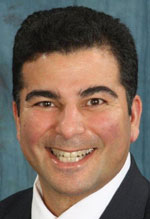 James R. Warda, Internal Communications Team Lead, Walgreens, brings a comprehensive communication background with Fortune 100 companies, including Allstate, Baxter, Boeing and Walgreens. As a Gold Quill award-winning communication leader, James focuses on achieving business results through an attention to people, both from a leadership and emotional perspective. And, as James explains, “it is this attention that builds trust, the foundation of any successful relationship – and communication effort.” James is also the author of “Where Are We Going So Fast?” and also writes a “Disney Moments” blog for celebrationspress.com. In addition, he has been a speaker and contributor for Chicken Soup for the Soul Enterprises, the “Chicago Tribune” and Pioneer Press.
James R. Warda, Internal Communications Team Lead, Walgreens, brings a comprehensive communication background with Fortune 100 companies, including Allstate, Baxter, Boeing and Walgreens. As a Gold Quill award-winning communication leader, James focuses on achieving business results through an attention to people, both from a leadership and emotional perspective. And, as James explains, “it is this attention that builds trust, the foundation of any successful relationship – and communication effort.” James is also the author of “Where Are We Going So Fast?” and also writes a “Disney Moments” blog for celebrationspress.com. In addition, he has been a speaker and contributor for Chicken Soup for the Soul Enterprises, the “Chicago Tribune” and Pioneer Press.
 Steve Cohen, Internal Digital Content Manager, develops, manages and publishes the news and company information on all internal company portals at Walgreens, but also develops the content strategies and roadmap for the company’s new social intranet, The Wall. Steve has been with Walgreens since 2006, and with his background in journalism, he created the first non-anonymous news and executive blogs for an audience of more than 247,000 team members. His passion to connect people to information and each other also played out in his time as managing editor of Facets, an online-only, bimonthly lifestyle magazine.
Steve Cohen, Internal Digital Content Manager, develops, manages and publishes the news and company information on all internal company portals at Walgreens, but also develops the content strategies and roadmap for the company’s new social intranet, The Wall. Steve has been with Walgreens since 2006, and with his background in journalism, he created the first non-anonymous news and executive blogs for an audience of more than 247,000 team members. His passion to connect people to information and each other also played out in his time as managing editor of Facets, an online-only, bimonthly lifestyle magazine.
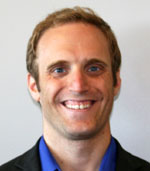 Chris Catania, Internal Social Media Manager, manages the internal enterprise social media programs and employee communities at Walgreens. Prior to joining Walgreens, he helped big brands develop and implement social media marketing and consumer-engagement initiatives. He also runs Live Fix Media, an all-consuming experiment exploring the intersection of life, live music and online communities.
Chris Catania, Internal Social Media Manager, manages the internal enterprise social media programs and employee communities at Walgreens. Prior to joining Walgreens, he helped big brands develop and implement social media marketing and consumer-engagement initiatives. He also runs Live Fix Media, an all-consuming experiment exploring the intersection of life, live music and online communities.
This webinar by James E. Lukaszewski, one of America’s most thoughtful and visible crisis advisors, will take participants through a high level strategic discussion of the crucial elements of crisis readiness. Lukaszewski defines a crisis as, “a people-stopping, show-stopping, product-stopping, reputation-redefining and trust-busting event that creates victims and/or explosive visibility.”
 While his initial response strategy discussion will focus around his five crucial steps to take during the golden hour of crisis, he’ll also talk extensively about readiness and avoiding the most predictable gaffs and problems that can torpedo even a well-designed and practiced response process.
While his initial response strategy discussion will focus around his five crucial steps to take during the golden hour of crisis, he’ll also talk extensively about readiness and avoiding the most predictable gaffs and problems that can torpedo even a well-designed and practiced response process.
Lukaszewski will talk about the readiness process, what leaders should be doing when crises occur, as well as how to prevent crisis; the crucial missing ingredients of most crisis plans; victim management; response triggers; what you do first; the ideal grand response strategy; how to forecast your greatest vulnerabilities; and how managers can recover their leadership and the organization’s reputation as they respond appropriately during these powerful events.
Crisis situations present extraordinary threats to organization leadership and reputation. Much crisis readiness activity is geared toward managing the explosive media coverage that often occurs when crises erupt.
What you will learn:
- The five crucial steps to take during the golden hour after crisis erupts
- The seven crucial tests any readiness plan must pass to effectively manage crisis and recover your reputation
- The seven crisis response failure profiles and how to avoid them
- The four crucial things leaders need to do when crisis occurs
- The seven mistakes and gaffs leaders need to avoid
- A perfect response communicated poorly will always be remembered as a poor response
James E. Lukaszewski is the author of a dozen books and manuals on crisis management, being a trusted advisor, and overcoming various crisis situations. He’s a member of the Crisis Management and Business Continuation Council (CMBCC) of ASIS, and has served on several ASIS standard setting task forces, including Workplace Violence. Corporate Legal Times described Jim as, “one of 28 crisis experts who should be on your speed dial when all hell breaks loose.” PR Week describes him as, “one of 24 crunch-time counselors who needs to be at your fingertips when crises occur.” In 2013, Trust Across America listed him as one of the “Top 100 Thought Leaders in Trustworthy Business Behavior.” Jim’s clients will tell you that his strategy of doing things quickly, that are simple, sensible, constructive and positive is a powerful formula for success and reputation protection.
His latest book, Lukaszewski on Crisis Communication, What Your CEO Needs to Know About Reputation Risk and Crisis Management, released in March 2013, is now available at Amazon.com. You can follow James on Twitter and read hisCrisis Guru blog.
Executives say they want more strategic communication support. Yet they and others still have high expectations for tactics. Plus, communication team members also are often more comfortable delivering on the tactics.
So should you change your game? And can you change your game? And will you still be around to share your success stories? Yes, yes, and yes.
In this insightful webinar, Sreejit Mohan, Director, Public Policy and Communications of Bayer HealthCare, and Liz Guthridge of Connect Consulting will share tips from their playbook on how to move from player to player/coach and become an indispensible partner to the business. They’ll also share the five questions you must ask yourself.
Already a member? View Replay
The Challenge:
The challenges the Bayer HealthCare communication team faced are common to other corporate communication departments today. The Bayer HealthCare team had noticed a divergence in what they were doing day-to-day and what the workforce, including the executives, wanted in communication support. In consultation with executives, they realized they needed to provide more opportunities for:
- Executives and employees to engage in direct dialogue to build greater trust
- Employees to learn more about the business challenges facing the company
- Executives to improve their informal and formal communication skills.
You’ll learn:
- How to know when it’s time to make major changes
- The three key makeover phases (redefining purpose, streamlining processes to free up time and resources, and developing a leader communication effectiveness program) that Bayer used
- How to keep delivering on commitments while making changes as well as develop your staff to prepare for the new work and challenges they face
- How to adopt the mindset of a coach/teacher/leader
- Effective ways to build and capitalize on relationships with leaders.
 Sreejit Mohan, Director, Public Policy and Communications, joined Bayer HealthCare in 2006 from Fleishman Hillard where he was a Vice President. In 2007, Sreejit was one of PRWeek’s “40 under 40” PR professionals—those younger than age 40 doing outstanding work.
Sreejit Mohan, Director, Public Policy and Communications, joined Bayer HealthCare in 2006 from Fleishman Hillard where he was a Vice President. In 2007, Sreejit was one of PRWeek’s “40 under 40” PR professionals—those younger than age 40 doing outstanding work.
 Liz Guthridge is is a consultant, author, and trainer specializing in strategic change leadership and communications. Department leaders of Fortune 1000 companies hire Liz and her firm Connect Consulting Group LLC when they need their people to adopt new initiatives and change the way they work. Before she founded Connect in 2004, Liz was a principal with several global change and HR consulting firms.
Liz Guthridge is is a consultant, author, and trainer specializing in strategic change leadership and communications. Department leaders of Fortune 1000 companies hire Liz and her firm Connect Consulting Group LLC when they need their people to adopt new initiatives and change the way they work. Before she founded Connect in 2004, Liz was a principal with several global change and HR consulting firms.
Study after study confirms the link between good manager communication and engaged employees. Listen to this webinar and learn what managers can do to become better communicators – and stronger leaders. You’ll learn how managers can change employee attitudes and behaviors, the type of information employees demand, and which communication resources leading organizations provide managers. You’ll leave the session with practical tips, tools and frameworks that managers can apply immediately and insights into what separates outstanding managers from the rest.
What You Will Learn:
- Communication competencies every manager needs
- How to keep managers and employees informed and engaged
- Winning managers’ support for communication
- The best way to alienate managers
- How to convey information, field challenges and brainstorm solutions – in under 15 minutes
Questions that are answered:
- What are leading organizations doing to enhance manager communication?
- What feedback should communicators solicit from managers?
- What do employees want most from their managers?
- What can communicators do to help managers succeed?
Who Should Attend:
- Communications professionals who want to enhance their partnership and value to the business
- First line supervisors and managers who want to take their staff communications to the next level
Instructor:
 Andy Szpekman provides human resource management and communication research, strategies and tools to improve business performance. His clients include Bank of America, BC Hydro, Cardinal Health, McKinsey & Co., Microsoft, News Corporation, Scholastic and Wachovia.
Andy Szpekman provides human resource management and communication research, strategies and tools to improve business performance. His clients include Bank of America, BC Hydro, Cardinal Health, McKinsey & Co., Microsoft, News Corporation, Scholastic and Wachovia.
Earlier in his career, he led HR communication at Bank of America, served as communications manager for a global division of Warner-Lambert, and was a senior HR and communications consultant with Brecker & Merryman, Inc.
Andy is active in the Council of Communication Management and a former Officer of the Metropolitan New York Association of Applied Psychology. His work has been featured in national news and business publications and leading trade journals. He holds a B.A. in psychology from William Paterson University and an M.A. in organizational psychology from Columbia University.
In today’s dynamic marketplace, businesses simply cannot afford to leave strategy execution to chance. Organizations that succeed will be the ones that can effectively mobilize and engage their employees in implementing new business strategies to produce immediate value for customers. Making a solid case for the new business realities to employees is critical for any organization to survive and thrive. Employees who have seen change initiatives fail in the past are likely to avoid risks associated with change. They become roadblocks when communicating the new business realities to employees. Employees must buy into any business’ priorities to succeed.
What You Will Learn:
- The three biggest mistake companies make when communicating bad news
- Establishing and communicating performance expectations and accountability.
- Building trust with employee involvement.
- Establishing team norms for how work gets done.
- Modeling effective virtual behavior across boundaries with all stakeholders.
Who Should Attend
Individuals responsible for corporate communications, public relations, corporate affairs, human resources, employee communications, media relations, and issues management.
Presented by:
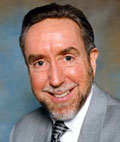 Dr. TJ Larkin and his business partner, Sandar, began Larkin Communication Consulting in 1985. The Larkins help large companies communicate major change to employees. Clients include: ABB, AT&T, Bank of America, Bankers Trust, Bell Labs, BHP Billiton, Boeing, BP, Caltex, DaimlerChrysler, ExxonMobil, GM, ICI, NASA, National Australia Bank, and PricewaterhouseCoopers. TJ and Sandar wrote the book, Communicating Change, now a McGraw-Hill Bookstore bestseller. Their paper, “Reaching and Changing Frontline Employees,” published in the Harvard Business Review has sold more than 40,000 reprints. The most recent papers by the Larkins can be downloaded, at no charge, from their Web site (Publications Page). TJ has a Ph.D. in communication from Michigan State University, and a B.Phil. in sociology from the University of Oxford.
Dr. TJ Larkin and his business partner, Sandar, began Larkin Communication Consulting in 1985. The Larkins help large companies communicate major change to employees. Clients include: ABB, AT&T, Bank of America, Bankers Trust, Bell Labs, BHP Billiton, Boeing, BP, Caltex, DaimlerChrysler, ExxonMobil, GM, ICI, NASA, National Australia Bank, and PricewaterhouseCoopers. TJ and Sandar wrote the book, Communicating Change, now a McGraw-Hill Bookstore bestseller. Their paper, “Reaching and Changing Frontline Employees,” published in the Harvard Business Review has sold more than 40,000 reprints. The most recent papers by the Larkins can be downloaded, at no charge, from their Web site (Publications Page). TJ has a Ph.D. in communication from Michigan State University, and a B.Phil. in sociology from the University of Oxford.
Mary Lou Dlugolenski, with nearly 20 years of experience, has established herself as a solid communications professional in roles spanning employee communication, public relations, marketing communication, change communication, and crisis management. She has worked in a number of industries including healthcare, manufacturing, engineering, advertising and financial services. Mary Lou has been with MassMutual for 18 months and serves as the company’s vice president of strategic enterprise communication. Recognizing employee communication as a critical business driver, Mary Lou and her team lead a strategy of employee engagement and culture change that creates dialogue between executives and employees
through well-orchestrated communication tactics. Prior to joining MassMutual, Mary Lou managed internal and external communication at various public companies, domestic and international, including Philips, GE, ADVO and
Alstom. Mary Lou lives in North Granby, Conn., with her husband and two children.
So often communicators surrender to time and budget challenges jumping into tactics or solutions without ever conducting a complete communications assessment. But without a baseline, it is nearly impossible to measure the success of ones efforts. It is also more challenging to demonstrate ones strategic abilities. Thus, communicators cannot afford to not conduct a complete communications assessment.
What You Will Learn:
- Why it is crucial for communicators to take time out to conduct a communications assessment and understand business needs.
- What formal and informal communications assessment tools/tactics will support your time and budget.
- How much time and budget is required to support formal and informal communications assessment tools/tactics.
- How to effectively communicate your assessment findings.
- How to leverage your findings to create a solid communication strategy and plan.
- What lessons can be learned from real world communications assessments conducted for NEC, Adidas-Solomon, UOP, ServiceMaster and other leading organizations.
Who Should Attend
This session is perfect for any level of experience, from those who are just starting in the field or those who have never conducted an assessment, to seasoned communication veterans.The seminar is designed for communication professionals who want to take their programs to the next level or arm themselves to move from tactician to strategic planner. Size of organization does not matter. It is especially suitable for individuals in:
- Internal and Corporate Communications
- Public relations
- Media Relations
- Public Affairs
- Marketing
- Small and mid-sized business leaders
- Corporate executives who are new to communication and measurement
Presented by:
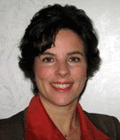 Julie Baron is Principal of COMMUNICATION WORKS. She has over 18 years of communications experience. Julie is a resourceful communications strategist with demonstrated ability to work internally within the organization, as well as externally within the community. Her functional expertise includes executive/employee communications, speech writing, cultural awareness and marketing communications.With a proven track record of positively impacting financial and operating results through communication, Julie’s client list includes Abbott, adidas-Salomon, HUB International, National Association of Realtors, Revell, and Pepsi Americas. Prior to opening the doors of COMMUNICATION WORKS, Julie held senior level communications positions for NEC Technologies, Inc. and Motorola, Inc. She also has agency experience.Julie has published several communication and training articles and has lectured on communications topics including CEO communication, culture development, global communication and internal marketing. She’s been recognized for her leadership abilities, team focus, creative strategy, execution and effective working relationships.An active member of the International Association of Business Communicators (IABC), Julie has held many volunteer leadership positions including president of the IABC/Chicago chapter, the association’s second largest chapter worldwide. Julie graduated from Northwestern University in Evanston, Illinois, with a master’s degree in communications. She holds a bachelor’s degree in broadcasting from SUNY Buffalo.
Julie Baron is Principal of COMMUNICATION WORKS. She has over 18 years of communications experience. Julie is a resourceful communications strategist with demonstrated ability to work internally within the organization, as well as externally within the community. Her functional expertise includes executive/employee communications, speech writing, cultural awareness and marketing communications.With a proven track record of positively impacting financial and operating results through communication, Julie’s client list includes Abbott, adidas-Salomon, HUB International, National Association of Realtors, Revell, and Pepsi Americas. Prior to opening the doors of COMMUNICATION WORKS, Julie held senior level communications positions for NEC Technologies, Inc. and Motorola, Inc. She also has agency experience.Julie has published several communication and training articles and has lectured on communications topics including CEO communication, culture development, global communication and internal marketing. She’s been recognized for her leadership abilities, team focus, creative strategy, execution and effective working relationships.An active member of the International Association of Business Communicators (IABC), Julie has held many volunteer leadership positions including president of the IABC/Chicago chapter, the association’s second largest chapter worldwide. Julie graduated from Northwestern University in Evanston, Illinois, with a master’s degree in communications. She holds a bachelor’s degree in broadcasting from SUNY Buffalo.
 Sean Williams is the owner of Communication AMMO, Inc. He helps leaders improve their communication skills, build strategic communication plans, strengthen internal communication capabilities and effectively measure the results. His clients include the Federal Reserve Bank of Cleveland and KeyBank. Follow him on Twitter at @CommAMMO.
Sean Williams is the owner of Communication AMMO, Inc. He helps leaders improve their communication skills, build strategic communication plans, strengthen internal communication capabilities and effectively measure the results. His clients include the Federal Reserve Bank of Cleveland and KeyBank. Follow him on Twitter at @CommAMMO.
Most recently, Williams was vice president of Corporate Communications for a financial institution, leading the internal communication, and internal and external public relations measurement and evaluation functions during the height of the financial crisis.
Previously, he was manager of Editorial Services for The Goodyear Tire and Rubber Company, responsible for internal communication and video production, photography and event production management. While at Goodyear, Williams lead the team rebuilding the corporate intranet, using editorial content from around the world. He also served as the primary internal communication consultant to the company’s senior leadership and produced videos and still photography for a variety of external and internal constituencies.
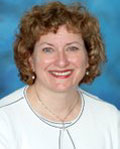 Susan D’Alexander, ABC, is Senior Communications Consultant at Motorola Global Communications. Susan has a 25-year career with Motorola with more than 18 years experience in communication management, including corporate, HR, marketing and corporate social responsibility communications. Susan is a member of the International Association of Business Communicators (IABC) earning an accredited business communicator (ABC) certification in 2008. She holds a Bachelor of Science degree from Western Illinois University and a MBA from Roosevelt University, Chicago, Illinois.
Susan D’Alexander, ABC, is Senior Communications Consultant at Motorola Global Communications. Susan has a 25-year career with Motorola with more than 18 years experience in communication management, including corporate, HR, marketing and corporate social responsibility communications. Susan is a member of the International Association of Business Communicators (IABC) earning an accredited business communicator (ABC) certification in 2008. She holds a Bachelor of Science degree from Western Illinois University and a MBA from Roosevelt University, Chicago, Illinois.
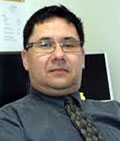 Alex Vass has been a communicator, telling stories and creating messages, all of his working life. He is presently a communications advisor with the Royal Canadian Mounted Police responsible for internal and external communications for the Codiac Regional RCMP detachment based in Moncton, New Brunswick. He along with his fellow RCMP communications colleagues in New Brunswick recognized the need for a
Alex Vass has been a communicator, telling stories and creating messages, all of his working life. He is presently a communications advisor with the Royal Canadian Mounted Police responsible for internal and external communications for the Codiac Regional RCMP detachment based in Moncton, New Brunswick. He along with his fellow RCMP communications colleagues in New Brunswick recognized the need for a
communications audit to demonstrate to senior management the value communications has within the organization and how communications must become part of the organization’s core business. The RCMP in New Brunswick is now on a path towards doing just that. Prior to joining the RCMP in 2005, Alex spent over 25 years as a journalist in Atlantic Canada, 16 years of which was as a reporter with the CTV television
network.
The problem is how to get your organization’s top executives out in front of as many employees as possible and provide a genuine communication exchange. The solution, for the past 100 years or so, is what we now call the “town hall” meeting, even though companies are not towns, and hardly ever do they occur in halls.
For employees and top executives, town hall meetings can be the best of times, or the worst of times, depending on how they’re handled. This webinar will surface some tried and true ways to create a mass employee meeting that allows a genuine exchange of ideas, issues, concerns and opportunities. You’ll also get a good list of what you absolutely should not do when you plan and produce your next town hall meeting.
What You Will Learn:
- Checklist on planning an effective series of town hall meetings
- Best practices on prepping your executives
- Techniques to break the ice and make the meetings fun and anything but boring
- Planning for tough questions and awkward moments
- Crucial tasks after the event
- Tips and techniques on using the newest technology to simultaneous global town-hall meetings
Presented by:
 Les Landes is President of Landes & Associates. His firm provides services in the areas of planning, marketing, public relations, organizational communications, team development, and quality improvement systems. Prior to starting his own firm, Les worked with Pet Incorporated where he served for 10 years as the company’s Director of Communications with responsibilities for corporate advertising, employee communication, public and media relations, consumer affairs, and creative services. He also played a major role in developing and implementing Pet’s quality management system.
Les Landes is President of Landes & Associates. His firm provides services in the areas of planning, marketing, public relations, organizational communications, team development, and quality improvement systems. Prior to starting his own firm, Les worked with Pet Incorporated where he served for 10 years as the company’s Director of Communications with responsibilities for corporate advertising, employee communication, public and media relations, consumer affairs, and creative services. He also played a major role in developing and implementing Pet’s quality management system.
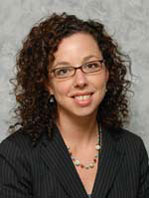 Veronica Apostolico is Director, Internal Communication, Global Operations, for Smith & Nephew. Veronica has 18-plus years in the communications field and has worked across all communications disciplines, internal and external, but has focused mainly on internal (change management, leadership coaching, crisis comms, employee comms). She has held communications positions with Warner-Lambert (now Pfizer), Ciba-Geigy (now Novartis – part of the team that led communications during the merger), Knoll Pharma (now Abbott) and RTI International. Veronica has also had her own communications consultancy for 5 years with clients including Aventis, Merck and J&J.
Veronica Apostolico is Director, Internal Communication, Global Operations, for Smith & Nephew. Veronica has 18-plus years in the communications field and has worked across all communications disciplines, internal and external, but has focused mainly on internal (change management, leadership coaching, crisis comms, employee comms). She has held communications positions with Warner-Lambert (now Pfizer), Ciba-Geigy (now Novartis – part of the team that led communications during the merger), Knoll Pharma (now Abbott) and RTI International. Veronica has also had her own communications consultancy for 5 years with clients including Aventis, Merck and J&J.
There’s too much silliness, noise, and crap coming at you, and you want a shut-off valve. You want to make more of a difference, working on only what truly matters. Right?
There’s too much information to manage and too many key messages for people to focus on, right?
Then you don’t want to miss this teleseminar! Best-selling author Bill Jensen will share tips, tools, and practices from two of his most recent books, The Simplicity Survival Handbook: 32 Ways to Do Less and Accomplish More and What Is Your Life’s Work? And he’ll tailor all those tips for communicators trying to break through the clutter and get their messages heard and acted upon.
What You Will Learn:
- Practical tips for doing less because you’re working smarter.
- Tips for educating your teammates and senior executive clients.
- Feeling jazzed that you have a lot more control over morebetterfaster than you thought you did!
Real World Questions That Will be Answered:
- Do your 3×5 rules apply to letters sent by mail?
- On the Communitelligence Communication Leadership blog, you and Bill Boyd have been really banging heads over the issue of whose the culprit in the information overload problem. You are really charging a big part of the problem to communicators. What are the biggest mistakes you think communicators are making?
- How long should an e-newsletter be, and any advice on format?
- OK Bill, it’s easy to say do less of what doesn’t really matter, but how do I actually decide what are those things?
- How do you feel about email where the message is entirely in the subject line?
Practical Advice For:
- Dealing with bosses and who just don’t get it.
- Deleting 75% of your emails.
- Composing emails, messages and deliverables that won’t get deleted!
- Getting more out of fewer meetings.
- Doing less to get the budgets you need and much more.
Testimonial:
- “Relevant topic; simple presentation of concepts; actionable tips and tools; down-to-earth presentation style (“one of us”)”
- “I already sent an e-mail this afternoon with the improved subject line format! Makes great sense. Excellent seminar all around — Look forward to more in the future.”
Instructor:
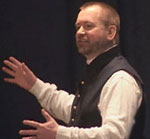 Harvard Business Review , CNBC and Fast Company have called Bill Jensen today’s foremost expert on work complexity and cutting through clutter to what really matters. The Conference Board designed an entire conference around his work.He has spent the past decade studying business’s ability to design work. (Much of what he has found horrifies him.)
Harvard Business Review , CNBC and Fast Company have called Bill Jensen today’s foremost expert on work complexity and cutting through clutter to what really matters. The Conference Board designed an entire conference around his work.He has spent the past decade studying business’s ability to design work. (Much of what he has found horrifies him.)
He is an internationally-acclaimed author and speaker who is known for provocative ideas, extremely useful content, and his passion for making it easier for managers and employees to work smarter and accomplish extraordinary feats.
The common thread in every Jensen presentation is that your biggest competition is not “out there” — in today’s cluttered and morebetterfaster business environments, you are competing for everyone’s time and attention!
His first book, Simplicity, has been hailed as a “breakthrough in the design of communication and understanding,” and was the Number 5 Leadership/Management book on Amazon in 2000. His next best-sellers were Work 2.0, and Simplicity Survival Handbook: 32 Ways to Do Less and Accomplish More.
His latest book, What is Your Life’s Work?, captures the intimate exchanges between mothers and daughters, fathers and sons, and caring teammates, all talking about what matters at work, and in life.
Bill has over 25 years of experience in communication and change consulting. He holds degrees in Communication Design and Organizational Development. He’s CEO of The Jensen Group, whose mission is: To make it easier to get stuff done. Among the Jensen Group’s clients are Bank of America, Merck, Pfizer, Duracell, NASA, The Royal Bank, The World Bank, Walt Disney World, American Express, the US Navy SEALS, the government of Ontario, Singapore Institute of Management, Guangzhou China Development District, and the Swedish Post Office.
Bill’s personal life fantasy is to bicycle around the globe via breweries.
How and why FedEx Employee Communications moved from focusing on creating more news to creating better business outcomes.
This webinar features Terry Simpson, head of employee communications for FedEx Express. After conducting a global communication assessment, Terry and her colleagues decided that the communication function needed to focus more on creating business outcomes rather than distributing more news. Working with FedEx Express leadership she identified and conducted a project in Los Angeles to improve US export volume through better managed communication. The result: 15% increase in volume and 23% increase in revenues with an overall 1,400 ROI.
What You Will Learn:
- How to work with senior leadership and a lot of data to identify opportunities to improve performance through better managed communication
- How to search for opportunities within the white spaces—the areas between functions and disciplines
- How to bring disparate groups together to improve performance through enhanced communication
- How to recognize root causes of performance problems
- The powerful role rewards play in communicating what’s important
- How to take a success and create an even bigger one with five more locations.
Questions that are answered:
- What’s the difference in managing communication to create output—a distribution business—and managing it to create outcomes—a solutions business?
- Is there a role for traditional communication practitioners in this process?
- What additional skills and knowledge do I need to move to this new level?
- How do I get started?
- How do I pick the right project that practically assures success?
- What’s in it for me if I make the shift? More money? More career opportunities? More fame?
- What’s the best way as a communication manager to move from output to focusing on solutions?
- What did FedEx stop doing when it embarked on this project? This goes to the question of staffing – were additions made to the department?
- Did you use any formal media channels to bolster your face-to-face solutions processes?
- Where do you go to get training to lead your department in this direction? What disciplines should you study?
- What pushback do you hear from communicators when you present this message? What’s the best way as a communication manager to move from output to focusing on solutions?
Who Should Purchase:
- Communications professionals who want to enhance their partnership and value to the business.
Instructor:
 Jim Shaffer is one of the world’s leading thought leaders, consultants and authors, helping businesses engage their people to achieve ultra-high levels of organizational performance. His book, The Leadership Solution (McGraw-Hill), has been hailed by leading CEOs as “invaluable for someone wanting to lead an organization into the future” and a “practical common-sense look at how leaders use communication to solve business problems.”
Jim Shaffer is one of the world’s leading thought leaders, consultants and authors, helping businesses engage their people to achieve ultra-high levels of organizational performance. His book, The Leadership Solution (McGraw-Hill), has been hailed by leading CEOs as “invaluable for someone wanting to lead an organization into the future” and a “practical common-sense look at how leaders use communication to solve business problems.”
Jim’s focus is on improving people performance: helping business leaders execute better by creating engaged people, who think and act like business owners. He blends his unique background in general management, product line management, organizational change and communication management and helps clients get at the root cause of people performance problems. His track record includes significant, quantifiable improvements in quality, service, costs, productivity and speed through a more engaged workforce.
Terry Simpson has worked in the Communications field for over 30 years in every area including broadcast, video, print, web sites, event management, strategy and content development. Terry is leading the change at FedEx Express and using communication solutions to solve business problems.
If you think performance counts now, you ain’t seen nothin’ yet! Jim Shaffer, who pioneered the results-driven approach to managing communication, will explain what others have done to become indispensable to their leaders, because they are over and over again putting money in their leaders pockets. Literally! Jim’s lively and provocative CD will reveal what companies are doing to surgically shift their priorities and focus on those parts of the organization that can drive performance results most. Using real case studies, Jim will show how companies can generate two- and three-thousand-percent returns on their internal communication investments. He’ll explore the Three Stages of Organizational Communication Maturity and explain how a department can attain increasingly higher levels of operating and financial performance.
Learn How:
- FedEx, Owens Corning and others have created significant performance improvements with returns on their investments exceeding 1,400 percent
- Honeywell cut its billing cycle by 10 days and eliminated 1.4 million process steps while improving quality
- Sara Lee reduced waste by 18 percent in five weeks at one its bakeries
Learn Why:
- Dave Brown’s CEO said: “We are absolutely convinced that there’s a competitive advantage to be gained by engaging our people through better managed communication. We’ve seen it pay off already in measurable improvements in costs and productivity.”
- Owens Corning’s senior vice president of manufacturing said, “We’ll take as many 700-percent returns as we can get.”
Discussion Topics:
- Why the communication function in every business must measurably increase the value it adds—or die
- What other companies are doing about it and how they’ve moved from an output to an outcome-generating organization
- What you can do next to take your department to the next level on the maturity curve
- What questions to ask to identify what matters most to your business
- How to set up an outcome-based project that generates huge financial returns
- How to measure your impact and your return
- How to shift your work from low value-adding to high value-adding
- How to get junk off your plate, because it doesn’t contribute to the bottom line
Who Should Purchase:
- Corporate communications
- Non-profit communications
- Media relations
- Public affairs
- Public relations
Instructor:
 Jim Shaffer is one of the world’s leading thought leaders, consultants and authors, helping businesses engage their people to achieve ultra-high levels of organizational performance. His book, The Leadership Solution (McGraw-Hill), has been hailed by leading CEOs as “invaluable for someone wanting to lead an organization into the future” and a “practical common-sense look at how leaders use communication to solve business problems.”
Jim Shaffer is one of the world’s leading thought leaders, consultants and authors, helping businesses engage their people to achieve ultra-high levels of organizational performance. His book, The Leadership Solution (McGraw-Hill), has been hailed by leading CEOs as “invaluable for someone wanting to lead an organization into the future” and a “practical common-sense look at how leaders use communication to solve business problems.”
Jim’s focus is on improving people performance: helping business leaders execute better by creating engaged people, who think and act like business owners. He blends his unique background in general management, product line management, organizational change and communication management and helps clients get at the root cause of people performance problems. His track record includes significant, quantifiable improvements in quality, service, costs, productivity and speed through a more engaged workforce.
Jim leads the Jim Shaffer Group, a consultancy devoted to creating compelling places to work—where people are actively engaged in building and sustaining winning organizations. Previously, he was a principal, senior consultant and leader of a Towers Perrin center of excellence. He was one of the architects and leading practitioners of the firm’s global change management consulting practice. Prior to that, he served as press secretary to Kansas Governor Robert B. Docking, headed public relations and advertising in two Chicago-based businesses, and served as a marketing product line manager.
Jim is a recipient of the International Association of Business Communicators’ prestigious Fellow award, and he was named “Communicator of the Year” by IABC’s Washington, D.C. chapter. Jim is a regular contributor to many business publications and a frequent speaker at leadership groups and professional associations. He has taught in the graduate schools at George Washington University and The University of St. Thomas. His clients have included IBM, The Mayo Clinic, Verizon, Toyota, FedEx and many more.
Is your communication planning approach connected to the goals of your business? Can you measure the value of your communication planning efforts once the plan has been executed? So often as communication professionals we are asked to create plans that focus on communication tactics, without assessing the real strategic impact of what the plan will accomplish. This Webinar provides a step-by-step approach to developing a communication plan that is truly strategic and connected to your business.
What You Will Learn:
- Creating a vision of the desired future state, based on the current situation
- Identifying what is important to focus on, based on the vision
- Developing clear objectives based on your priorities
- Aligning messaging, strategy and tactics to your objectives
- Gaining buy in for your plan, based on the impact it will have on the business
Questions that will be answered:
- What does is mean to be strategic?
- How do you develop a meaningful vision?
- How do you determine which elements of the vision are most important?
- What are the strategies and tactics that will have the most impact?
- How do you gain support for your plan?
- What are effective ways to measure impact?
Who Should Purchase?
- Communications professionals who want to enhance their partnership and value to the business.
Instructor:
 Barbara Fagan-Smith is the founder and CEO of ROI Communications, Inc., an award-winning internal communications consulting firm focused on helping large organizations adapt and succeed in times of change. Building on more than two decades of experience in corporate communications and journalism, she leads ROI’s work with Fortune 500 companies, helping them develop and manage effective internal communication projects that deliver clear business results.Since its launch in 2001, ROI Communications has worked with a broad array of major clients, including Hewlett- Packard, Sun Microsystems, Adobe Systems, Blue Shield of California, Cisco Systems, The Gap, Maxtor, Oak Technology and DreamWorks. ROI Communications was most recently recognized with multiple awards from the American Society of Professional Communicators and the International Association of Business Communicators (IABC) for its standard-setting work in change communications.Prior to founding ROI Communications, Barbara was the director of employee and electronic communications at Quantum Corporation and director of interactive communications at Simply Interactive, Inc.
Barbara Fagan-Smith is the founder and CEO of ROI Communications, Inc., an award-winning internal communications consulting firm focused on helping large organizations adapt and succeed in times of change. Building on more than two decades of experience in corporate communications and journalism, she leads ROI’s work with Fortune 500 companies, helping them develop and manage effective internal communication projects that deliver clear business results.Since its launch in 2001, ROI Communications has worked with a broad array of major clients, including Hewlett- Packard, Sun Microsystems, Adobe Systems, Blue Shield of California, Cisco Systems, The Gap, Maxtor, Oak Technology and DreamWorks. ROI Communications was most recently recognized with multiple awards from the American Society of Professional Communicators and the International Association of Business Communicators (IABC) for its standard-setting work in change communications.Prior to founding ROI Communications, Barbara was the director of employee and electronic communications at Quantum Corporation and director of interactive communications at Simply Interactive, Inc.
Before her career in corporate communications, Barbara worked as a London-based television producer for ABC News, where she covered the revolutions in Eastern Europe and the 1991 Gulf War. Earlier, she covered international business and produced national radio programs for ABC. She holds a B.A. in Journalism and Communications from Humboldt State University.
Learn how to gain control of your production processes, no matter how obstacle-ridden they might be.
The creative fun of communicating can be quickly overshadowed by the headaches of getting things through the process. Whether the source of your migraine is source reviews, management approvals or just keeping all the moving parts in sync, relief is on the way. You can gain control of your production processes, no matter how obstacle-ridden they might be, and this session teaches you how!
The six-person Editorial Services team at Philip Morris USA produces hundreds of stories, speeches and other writing projects per year. Add to this huge volume the challenges of working in a closely watched industry and the approval process becomes extremely complex. Hear how this team created tools — from a Job Request Form to an online Content Tracker — that keep stories moving at an amazing rate. Find out how they use client feedback, not only to improve their writing but also to improve their content management tools.
Learning topics:
- Why and how to create content management tools, and why you should keep tweaking them
- How to master the tactics of communication production, while staying focused on strategy
- How to minimize management and legal approval headaches — before they start
- How to manage internal clients’ expectations
- How to influence others in your company to follow your production processes
Robert and Denise answer real-world questions on:
- The decision to outsource writing and the tools that have helped make this work smoothly
- The response rate on post-work survey, and how to encourage clients to fill the forms
- Phillip Morris’ Content Tracker
- Additional tools in the works
- Integrating proofreading into the system and other quality control measures
- Typical turnaround time on review processes
- Getting information released
Who should purchase:
This practical, information-packed learning opportunity is ideal for managers and professionals in:
- Corporate Communications
- Internal Communications
- Public Affairs
- Web Management
- Speechwriting
- Publication Management
- Anyone who is responsible for producing content
- College/university libraries and bookstores
About the Instructors:
 Robert J. Holland, ABC, is owner of Holland Communication Solutions LLC in Richmond, Va. After more than 12 years in corporate communications with AT&T, Lucent Technologies and Capital One, Robert formed his company in 2000 to help clients align communication programs with business goals. He has helped leading organizations such as the Federal Reserve Bank of Richmond, Freddie Mac, Media General and Wells Fargo with services ranging from strategic communication planning to measurement. He is a frequent regional and national speaker, and he writes an award-winning column, “Communication at Work,” for Richmond.com. He is author of Prove Your Worth: The Complete Guide to Measuring the Business Value of Communication, published by Ragan Communications. Robert is also co-leader of the Communitelligence Internal Communications community.
Robert J. Holland, ABC, is owner of Holland Communication Solutions LLC in Richmond, Va. After more than 12 years in corporate communications with AT&T, Lucent Technologies and Capital One, Robert formed his company in 2000 to help clients align communication programs with business goals. He has helped leading organizations such as the Federal Reserve Bank of Richmond, Freddie Mac, Media General and Wells Fargo with services ranging from strategic communication planning to measurement. He is a frequent regional and national speaker, and he writes an award-winning column, “Communication at Work,” for Richmond.com. He is author of Prove Your Worth: The Complete Guide to Measuring the Business Value of Communication, published by Ragan Communications. Robert is also co-leader of the Communitelligence Internal Communications community.
Denise Koenig is manager of Editorial Services for Philip Morris USA in Richmond, Va. She has worked for the company since 1984, from coordinating and editing plant-level communications in Louisville, Ky., to managing communications for multiple manufacturing plants in Richmond. Beginning in 2003, she built the team of five editorial consultants she now manages, all of whom work in their individual offices. Denise manages the team’s production of content for executive communications, the pmusa.com Web site, the intranet, speeches and special publications. She is a graduate of Ball State University with a bachelor’s in journalism and political science.
There’s no shortage of theory, hyperbole and pure BS (or baloney, or hot air) about social media marketing. Learn what social media’s challenges and opportunities really are – in plain English – via case studies from three experts who are in the trenches with household name corporations.
Heads up … this is not another web conference about social media tools such as blogs, vlogs, podcasts, social networks and microsharing. The technology is important, of course, but not nearly as crucial as the need to understand how to engage in instant, two-way conversations stripped of safe corporate-speak or spin. Grasping that reality and executing it is the sweet spot of social media, and that’s where this webinar is focused. Learn by successful examples and studies of major brands who have pioneered in the space.
What You Will Learn:
- What your audience expects from your social media efforts
- What resistance you’ll meet from inside your own organization — and how to overcome it
- Top 6 reasons your company should not blog
- Top 5 reasons you should have a blog
- Why most corporate social networks fail
- How smart companies are using social networks now and how you can too
- The way to get your company banned from a social network
- Which social networks matter and which ones don’t
Who Should Attend
This webinar is primarily aimed at individuals responsible for corporate communications, public relations, corporate affairs, human resources, employee communications, media relations, and issues management. It will help those in the early stages of implementing or learning about social media, although it will also help more advanced practioners to focus their efforts. It is especially suitable for:
- Small and mid-sized business leaders
- Corporate executives who are new to social media
Presented by:
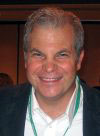 Christopher Barger is Director, Global Communications Technology. In this role, he leads the social media (blogging, podcasting, user-generated content, wikis, social networking, etc.) efforts for General Motors – both in developing the company’s own content and building relationships with influential voices outside the company. Barger is a communications professional with nearly 10 years experience at Fortune 20 companies. He is a seasoned media spokesperson, communications strategist, and public speaker. Barger’s specialties are “Social Media”/Web 2.0, social networking and media; public speaking.
Christopher Barger is Director, Global Communications Technology. In this role, he leads the social media (blogging, podcasting, user-generated content, wikis, social networking, etc.) efforts for General Motors – both in developing the company’s own content and building relationships with influential voices outside the company. Barger is a communications professional with nearly 10 years experience at Fortune 20 companies. He is a seasoned media spokesperson, communications strategist, and public speaker. Barger’s specialties are “Social Media”/Web 2.0, social networking and media; public speaking.
 B.L. Ochman helps companies integrate social media tools and blog advertising into their communications to engage their audience and increase their sales. She is an Internet marketing strategist to Fortune 500 companies including IBM, McGraw-Hill, American Greetings, Ford Motors, Simon & Schuster, Cendant, Kaneka Corporation and others. She is internationally respected blogger whose blog about Internet marketing, What’s Next Blog, is rated in the top 50 in the world by Ad Age Power 150, where she also is Number One among women business bloggers. She heads the creative team of whatsnextonline.com. Her articles and case studies about Internet marketing trends appear in MarketingProfs, MediaPost, Businessweek Online, and several other publications. Before turning her talent to the Internet in 1995, Ochman ran an award-winning New York PR firm that she grew to one of the 100 largest independent PR firms in the US, with clients including Stew Leonard’s, Miracle-Gro Plant Food, The American Dairy Association, Kaneka Corporation and many more.
B.L. Ochman helps companies integrate social media tools and blog advertising into their communications to engage their audience and increase their sales. She is an Internet marketing strategist to Fortune 500 companies including IBM, McGraw-Hill, American Greetings, Ford Motors, Simon & Schuster, Cendant, Kaneka Corporation and others. She is internationally respected blogger whose blog about Internet marketing, What’s Next Blog, is rated in the top 50 in the world by Ad Age Power 150, where she also is Number One among women business bloggers. She heads the creative team of whatsnextonline.com. Her articles and case studies about Internet marketing trends appear in MarketingProfs, MediaPost, Businessweek Online, and several other publications. Before turning her talent to the Internet in 1995, Ochman ran an award-winning New York PR firm that she grew to one of the 100 largest independent PR firms in the US, with clients including Stew Leonard’s, Miracle-Gro Plant Food, The American Dairy Association, Kaneka Corporation and many more.
 Mike Prosceno runs “new” media relations at SAP. He is also a social media evangelist inside the company promoting both the internal use of social media for productivity gains as well as its use externally for reputation enhancement. Having been in corporate or marketing communications for 18 years he has held a variety of management and non-management positions in the IT, manufacturing and financial-services industries.
Mike Prosceno runs “new” media relations at SAP. He is also a social media evangelist inside the company promoting both the internal use of social media for productivity gains as well as its use externally for reputation enhancement. Having been in corporate or marketing communications for 18 years he has held a variety of management and non-management positions in the IT, manufacturing and financial-services industries.
Attendee comments:
- “BL definitely added value for my particular perspective on what I am trying to accomplish.
- “Great overview by Ms. Ochman. Good, practical experience from GM.”

